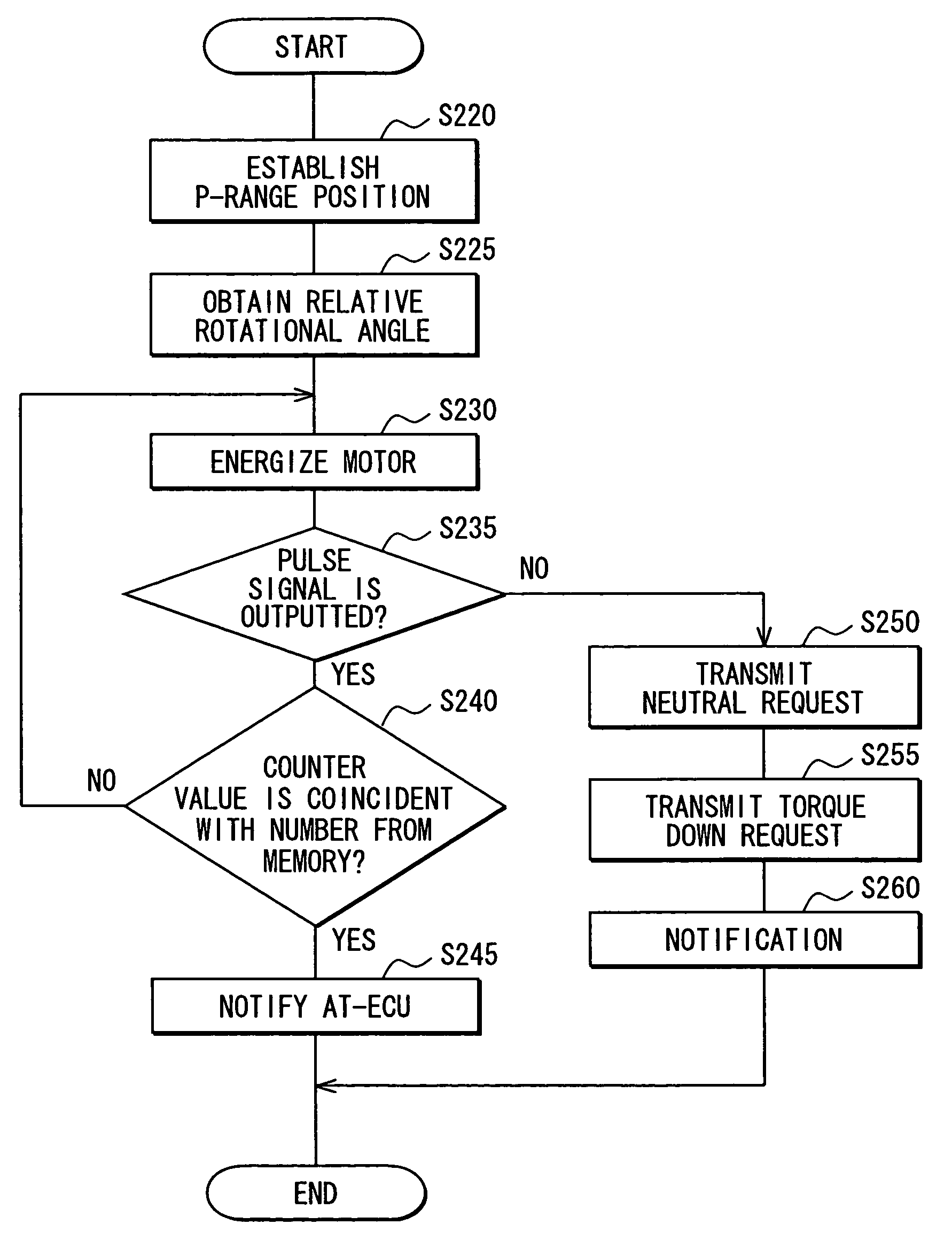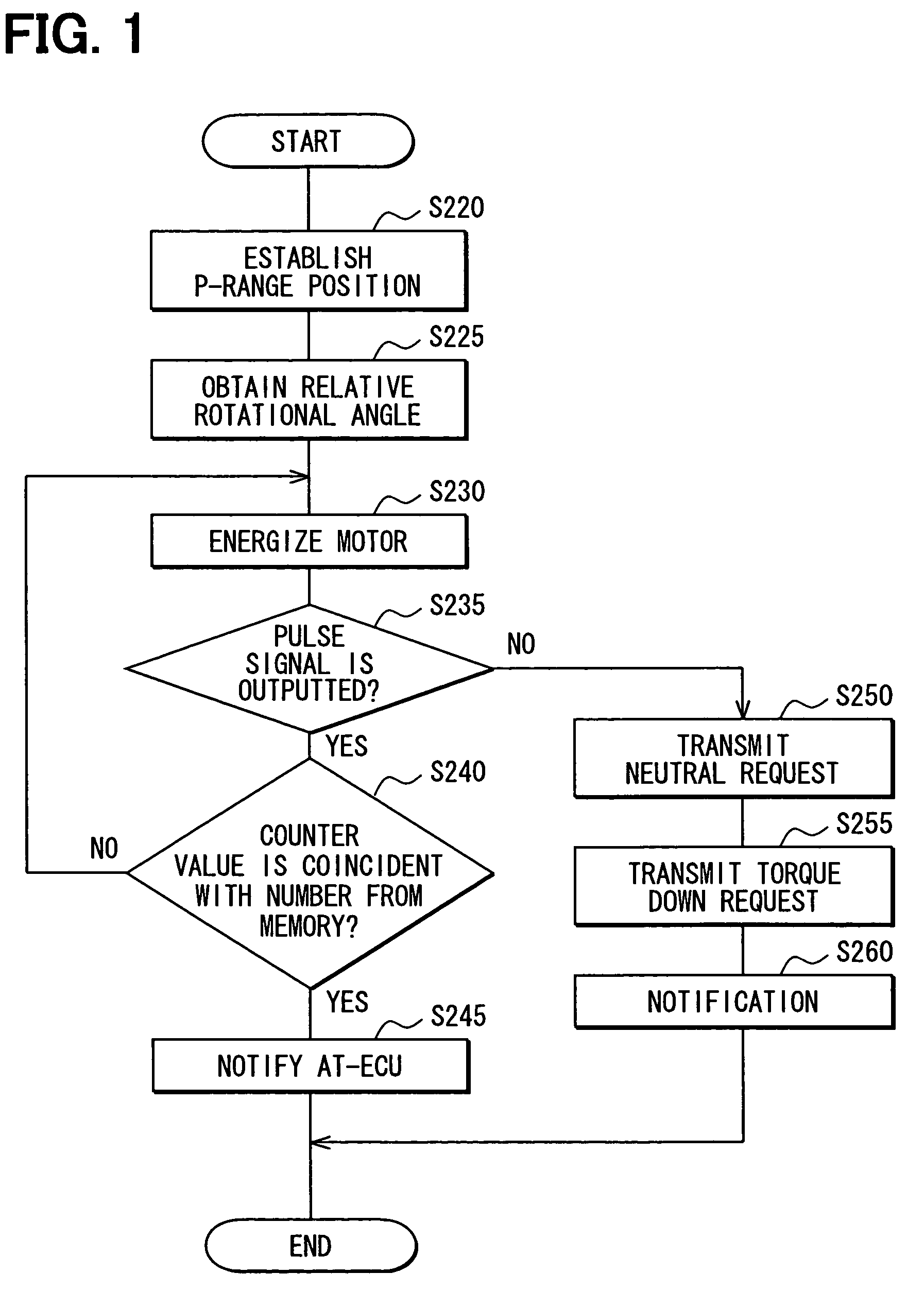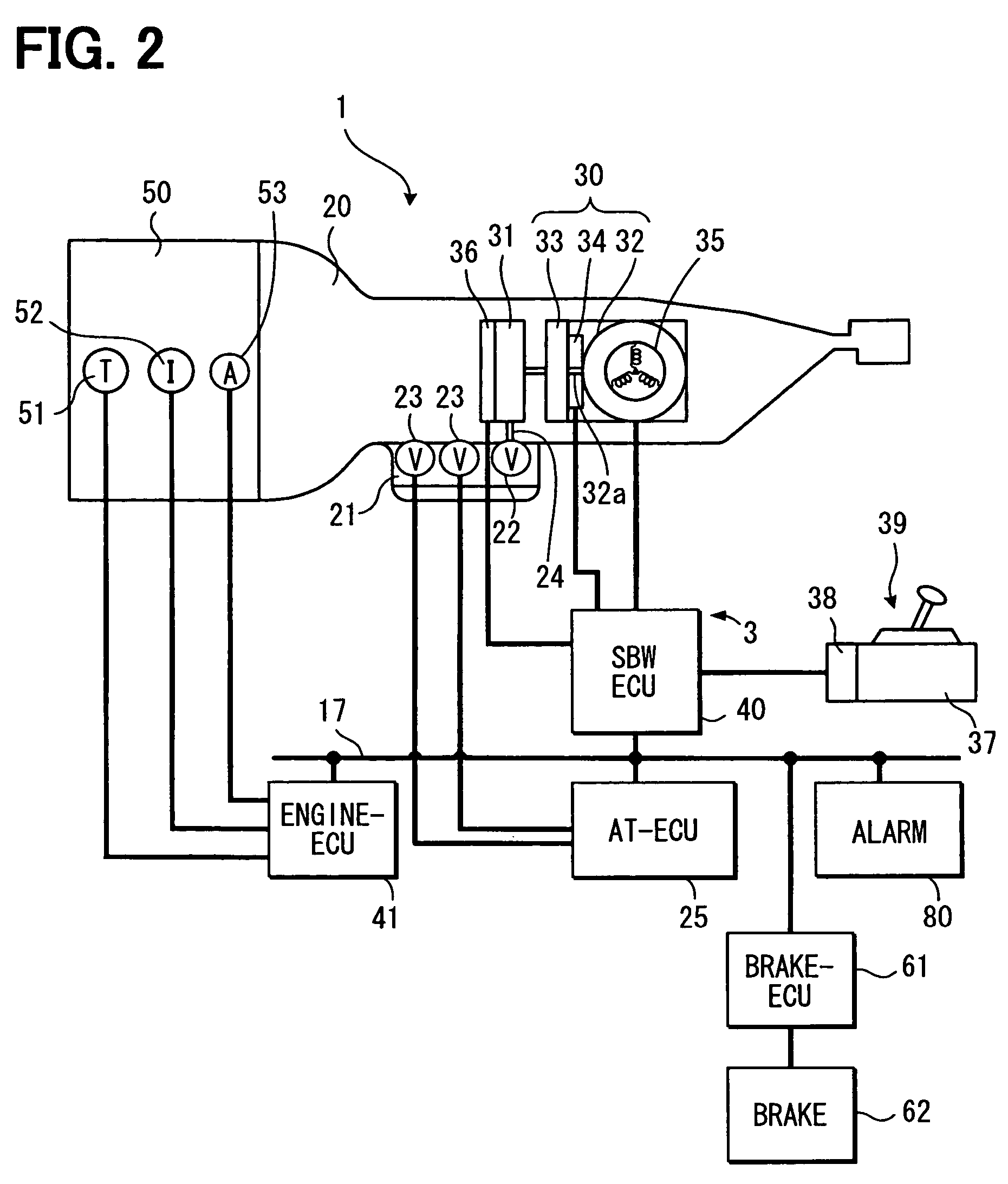Vehicle control system
a technology of vehicle control and control system, which is applied in the direction of gearing control, gearing element, belt/chain/gearring, etc., can solve the problems of not being able to detect an actual shift range and being unable to make the switch to the instructed shift rang
- Summary
- Abstract
- Description
- Claims
- Application Information
AI Technical Summary
Benefits of technology
Problems solved by technology
Method used
Image
Examples
first embodiment
[0018]FIG. 2 is a schematic diagram showing a vehicle system 1 using a vehicle control system according to a first embodiment of the present invention. A shift-by-wire system 3 as the vehicle control system is a system for controlling the travel of a vehicle and it is connected electrically or optically through an interior LAN line 17 to an automatic transmission controlling ECU (hereinafter referred to as “AT controlling ECU”) 25, an engine controlling ECU 41, a brake controlling ECU 61, and an alarm device 80. A detent plate 72 (see FIG. 3) as a rotating member is engaged with a shift range switching valve 24 (see FIG. 3) of an automatic transmission 20, whereby the shift-by-wire system 3 is connected mechanically to the automatic transmission 20. To the shift-by-wire system 3 is connected a shift range selector 39 which outputs a shift range changing command to the shift-by-wire system 3, the shift range changing command instructing a change to an instructed shift range selected ...
second embodiment
[0058]This second embodiment is a modification of the first embodiment. In this second embodiment, when a shift range changing command for changing to the D-range is outputted after the roller 74 is abutted against the P-wall 76 to establish the P-range position as in the first embodiment, the D-range is realized not by the amount of operation but by abutment of the roller 74 against the D-wall 77. In this second embodiment, the R and N-ranges are realized on the basis of the amount of operation as in the first embodiment.
[0059]FIG. 6 is a flow chart showing a processing flow for realizing the D-range by abutment of the roller 74 against the D-wall 77. This processing is started upon output of a shift range changing command after the P-range position is established in the same way as in the first embodiment.
[0060]In Step S305, it is determined whether the shift range instructed by the shift range changing command is the D-range. When the answer is affirmative, the processing flow ad...
third embodiment
[0067]According to this third embodiment, when the shift range sensor 36 is in an abnormal condition, P and D-range positions are established in a continuous manner.
[0068]FIGS. 7 and 8 are flow charts showing the flow of a shift range changing process performed when the shift range sensor 36 related to the third embodiment is in an abnormal condition. This processing is executed upon output of a shift range changing command from the shift range selector 39. In this third embodiment, as to substantially the same steps as in the first embodiment, they are identified by the same reference numerals as in the first embodiment, and explanations thereof will be omitted.
[0069]In Step S405, the SBW controlling ECU 40 sends a neutral control request to the AT controlling ECU 25. Upon receipt of the neutral control request the AT controlling ECU 25 executes an N-range control and realizes the N-range. When the manual valve 24 is moved in a neutral condition of the automatic transmission 20, th...
PUM
 Login to View More
Login to View More Abstract
Description
Claims
Application Information
 Login to View More
Login to View More - R&D
- Intellectual Property
- Life Sciences
- Materials
- Tech Scout
- Unparalleled Data Quality
- Higher Quality Content
- 60% Fewer Hallucinations
Browse by: Latest US Patents, China's latest patents, Technical Efficacy Thesaurus, Application Domain, Technology Topic, Popular Technical Reports.
© 2025 PatSnap. All rights reserved.Legal|Privacy policy|Modern Slavery Act Transparency Statement|Sitemap|About US| Contact US: help@patsnap.com



